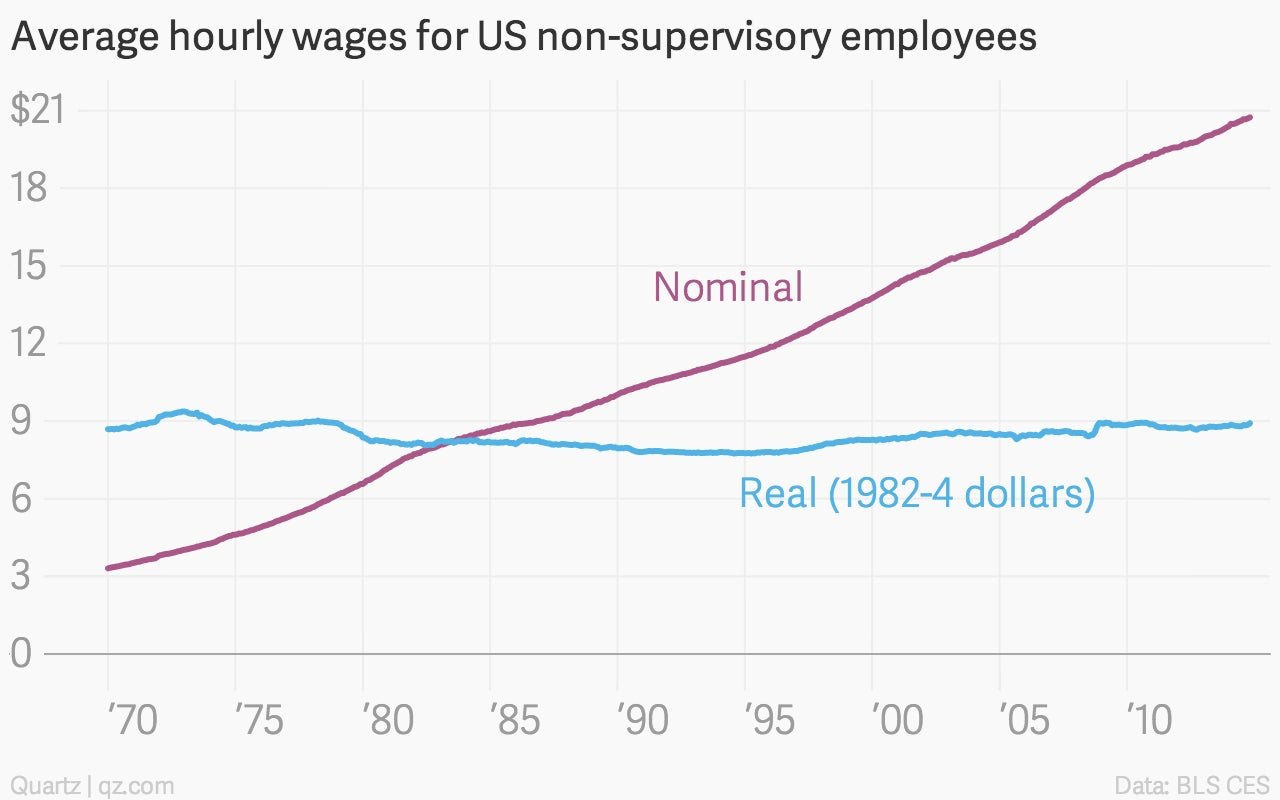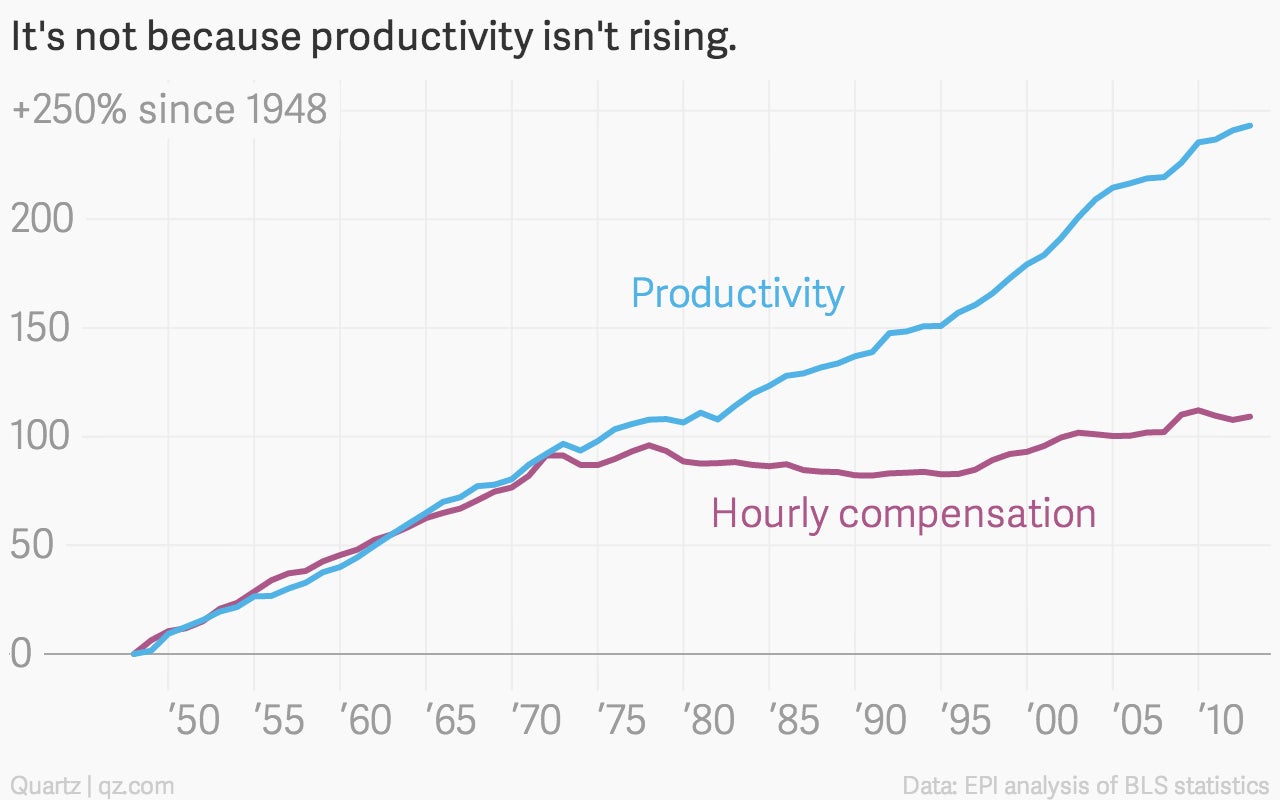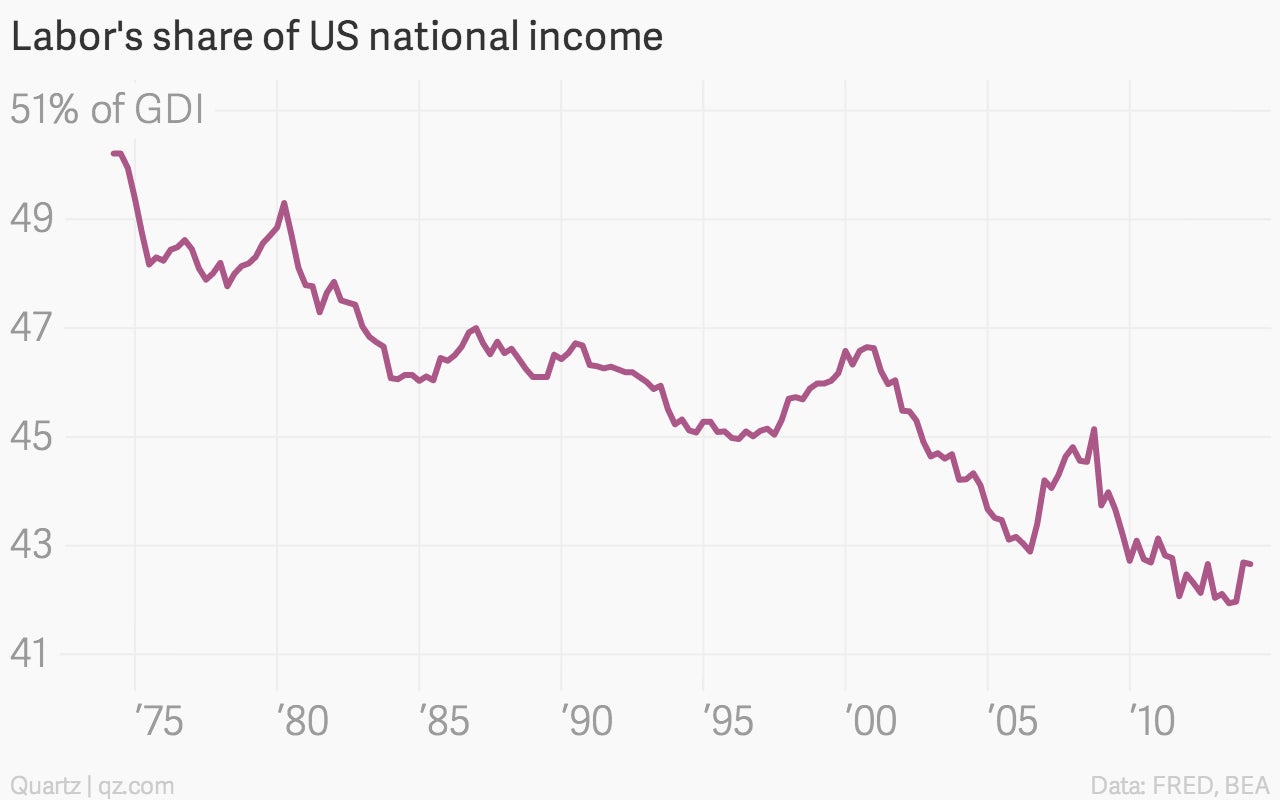Why US workers won’t get a real raise in 2015
With last quarter’s sparkling 5% annualized growth in US GDP and the unemployment rate falling below 6%, it’s safe to say that 2014 was the year the US economy completed its recovery from the financial crisis.


With last quarter’s sparkling 5% annualized growth in US GDP and the unemployment rate falling below 6%, it’s safe to say that 2014 was the year the US economy completed its recovery from the financial crisis.
But there’s still one major problem: Wage stagnation among American workers. Average wages have remained unchanged for the last eight years, and remain below what workers earned in the nineteen seventies.

One reason, you might suggest, is the problematic slowdown in US productivity growth of recent years—the so-called “great stagnation.” But even if you believe workers wages should rise in concert with productivity, that hasn’t been the case in the US since the seventies.

Another common excuse for this stagnation is that overall compensation is growing thanks to increased spending on benefits and healthcare, but as Brookings economist Barry Bosworth notes, non-wage compensation has held steady over the last several decades.
Which is why hopes that the recovery will finally begin bleeding into worker’s paychecks are misplaced. While there’s no question that the recession was a major drag on living standards, the trends that caused real wages to stagnate were in place long before. And given how much economic growth in the US is generated by personal consumption, it’s not just a problem for the working class.
That leaves Bosworth, and us, with one last explanation: The changing global economy, with its massive pool of labor, increasing emphasis on intellectual property, and permissive rules for capital sloshing around the world, has resulted what Bosworth calls a “new phenomenon … the decline in labor’s share of income for which we have no satisfactory explanation.”

If Bosworth and other wage-growth skeptics are correct, the increasingly robust US economy isn’t going to finally reward workers for their patience in 2015. Instead, it will confirm that wealthy countries haven’t found a way for the new global economy to spread its prosperity widely.